The Personal Injury Claim Process in Colorado Explained: A Step-by-Step Guide
Key Takeaways
- Personal injury claims seek money for harm caused by others’ actions
- Colorado has specific time limits for filing personal injury lawsuits
- Lawyers can help navigate the claim process and fight for fair payment

Getting hurt due to someone else’s actions can be stressful and confusing. In Colorado, the personal injury claim process aims to help injured people get money for their losses. The process starts when you file a claim against the person or company responsible for your injury.
Filing a claim involves gathering proof, talking to insurance companies, and sometimes going to court. It’s important to know the steps and deadlines. In Colorado, you usually have two years to file a lawsuit for most injuries.
Understanding how claims work in Colorado can help you protect your rights. It’s often helpful to talk to a lawyer who knows about personal injury law. They can guide you through the steps and work to get you fair payment for your medical bills, lost wages, and other costs.
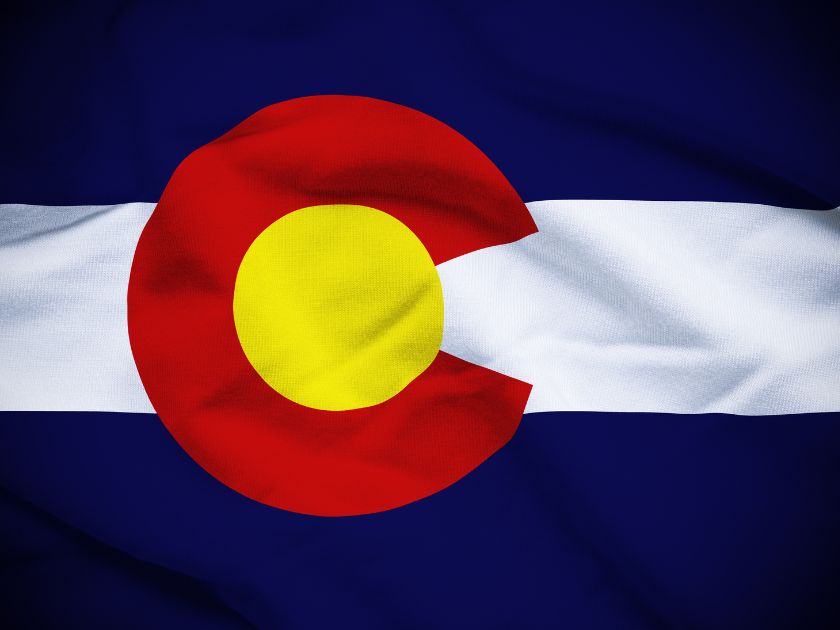
Understanding Personal Injury Law in Colorado
Personal injury law in Colorado protects people who suffer harm due to others’ negligence. It sets rules for seeking compensation and defines key legal concepts.
Basics of Personal Injury Law
Personal injury cases in Colorado involve proving negligence. This means showing that someone failed to act with reasonable care. The injured person must prove four elements:
- Duty of care
- Breach of duty
- Causation
- Damages
Colorado uses a comparative fault system. This means a person can still recover damages even if they’re partly at fault. But their compensation is reduced by their percentage of fault.
Some cases involve strict liability. This applies to situations like dog bites or defective products. In these cases, the injured person doesn’t need to prove negligence.
Colorado Personal Injury Statutes
Colorado has specific laws that govern personal injury cases. The statute of limitations is crucial. It sets time limits for filing a lawsuit.
For most personal injury cases, the limit is two years from the date of injury. But some cases have different deadlines:
- Medical malpractice: 2 years from discovery
- Property damage: 3 years
Colorado also caps certain damages. Non-economic damages, like pain and suffering, have a limit. This cap changes yearly based on inflation.
The state restricts punitive damages too. They can’t exceed the total of other damages awarded. But there are rare exceptions to this rule.

Initial Steps in Filing a Personal Injury Claim
After an accident in Colorado, taking prompt action is crucial. The right steps can strengthen your claim and protect your rights to compensation.
Seek Medical Attention
Getting medical care is the top priority after an injury. Visit a doctor or hospital right away, even if you feel fine. Some injuries may not show symptoms immediately.
Keep all medical records and bills. These documents prove your injuries and related costs. Follow your doctor’s advice and attend all follow-up appointments.
Delaying medical care can harm your health and weaken your claim. Insurance companies may argue your injuries aren’t serious if you wait to get treatment.
Gather Evidence
Collect as much information as possible about the accident. This helps prove what happened and who is at fault.
Key evidence includes:
- Photos of the accident scene
- Witness contact information
- Police reports
- Your own written account of events
Save any damaged items or torn clothing. These can serve as physical evidence of the incident.
Consult With an Attorney
Speaking with a lawyer early on can protect your rights. Many attorneys offer free initial consultations. They can assess your case and explain your options.
An experienced lawyer can:
- Handle communications with insurance companies
- Ensure you meet all deadlines
- Gather additional evidence
- Calculate the full value of your claim
Legal help is especially important for serious injuries or complex cases.
Notify the At-Fault Party
Inform the person or company responsible for your injury about your intent to file a claim. This often means contacting their insurance company.
Be careful what you say. Stick to basic facts about the incident. Don’t admit fault or downplay your injuries.
The insurance company may try to settle quickly. It’s best to wait until you understand the full extent of your injuries before accepting any offers.
Keep a record of all communications. This includes dates, times, and what was discussed.
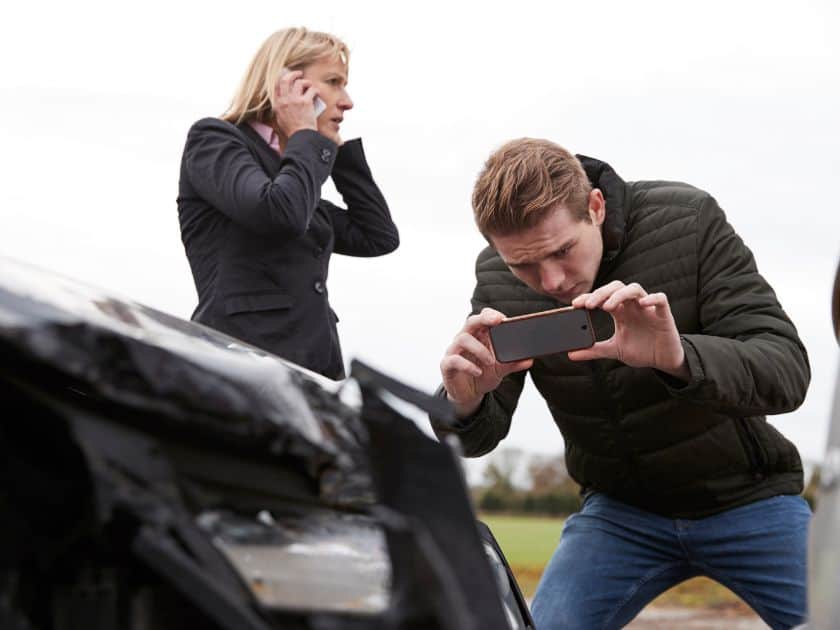
Documentation and Evidence in Injury Claims
Gathering strong evidence is key to winning a personal injury case in Colorado. Good documentation helps prove what happened and how badly you were hurt.
Medical Documentation
Medical records are crucial for injury claims. They show the extent of injuries and link them to the accident.
Doctors’ notes, test results, and treatment plans all serve as proof. Bills and receipts help calculate damages.
It’s important to keep all paperwork from hospital visits and follow-up care. Photos of injuries can also be useful evidence.
Injured people should attend all appointments and follow medical advice. This creates a clear record of their injuries and recovery process.
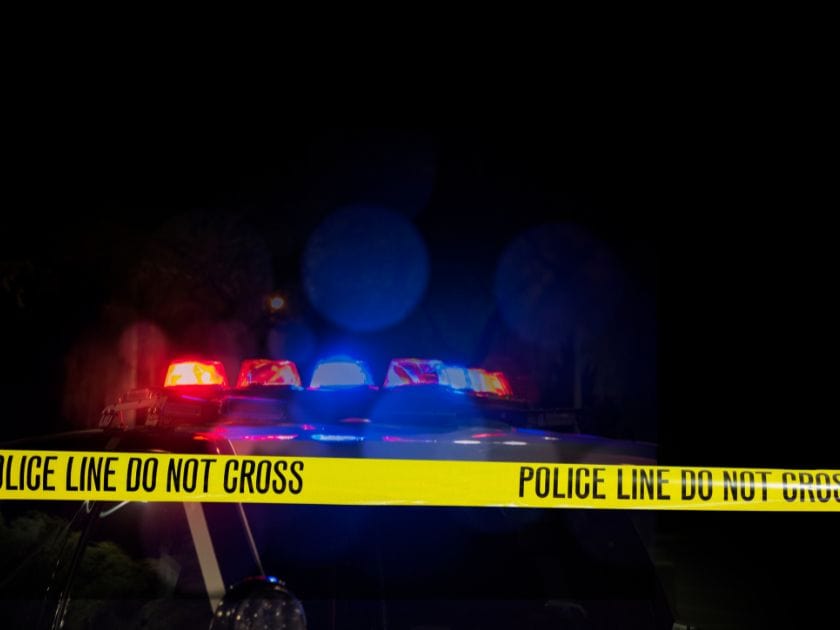
Police and Accident Reports
Official reports provide an unbiased account of what happened. Police reports often include:
- Date, time, and location of the incident
- Names and contact info of those involved
- Witness statements
- Diagram of the accident scene
- Officer’s observations and initial findings
These reports can be vital for proving fault in an injury claim. They offer a professional perspective on the events.
For car crashes, drivers should always call the police to the scene. This ensures an official report is filed.
Witness Statements
Eyewitness accounts can strongly support a claim. They offer an outside view of what occurred.
Witness statements should be collected as soon as possible after the incident. Details are fresher in people’s minds right after an event.
Good witness statements include:
- The witness’s name and contact information
- What they saw, heard, or experienced
- Where they were at the time
- Any other relevant details
Video recordings from bystanders can also serve as powerful evidence. They capture events as they unfold.
Lawyers often interview witnesses to get more detailed accounts. These statements can be crucial in negotiations or at trial.

Dealing with Insurance Companies
Insurance companies play a key role in personal injury claims. Filing a claim and talking to adjusters can be tricky. It’s important to know how to handle these steps.
Filing the Insurance Claim
Filing an insurance claim is the first step after an accident. Contact the at-fault party’s insurer right away. Give them basic facts about the incident. Don’t share too much detail at this point.
Keep records of all talks with the insurance company. Note down dates, times, and who you spoke to. This helps track the claim’s progress.
Insurance firms may ask for a recorded statement. It’s best to wait until you talk to a lawyer before doing this. They might use your words against you later.
Communicating With Insurance Adjusters
Insurance adjusters review claims for the company. They aim to settle cases quickly and cheaply. Be careful when talking to them.
Adjusters may seem friendly, but remember they work for the insurer. They might try to minimize your claim’s value. Don’t agree to a quick settlement before knowing the full extent of your injuries.
It’s wise to let a lawyer handle talks with adjusters. They know how to deal with insurance tactics. This can help protect your rights and get fair compensation.
Keep all emails and letters from adjusters. If they make offers, get them in writing. Don’t sign anything without legal advice first.

Legal Considerations and Challenges
Filing a personal injury claim in Colorado involves several key legal factors. These include proving fault, understanding shared responsibility, and filing within required timeframes.
Proving Negligence and Liability
To win a personal injury case, you must show the other party was negligent. This means proving they failed to act with reasonable care. You need to show:
- The party had a duty of care
- They breached that duty
- The breach caused your injury
- You suffered damages as a result
Personal injury claims in Colorado can stem from car crashes, slip and falls, or other accidents. Gathering evidence is crucial. This may include:
• Photos of the accident scene
• Witness statements
• Medical records
• Expert testimony
Strong proof of liability increases your chances of a favorable outcome.
Understanding Comparative Negligence
Colorado follows a modified comparative negligence rule. This means you can still recover damages even if you were partly at fault. But your compensation will be reduced by your percentage of fault.
For example, if you’re found 20% at fault, you’ll receive 80% of the total damages. However, if you’re 50% or more at fault, you can’t recover any damages.
This rule can affect your claim in several ways:
• It may lower your compensation
• It can make settlement talks more complex
• It might lead to disputes over fault percentages
Understanding this rule is vital when assessing your claim’s strength.
Statute of Limitations and Tolling
In Colorado, you have a limited time to file a personal injury lawsuit. This is called the statute of limitations. For most personal injury cases, you have two years from the date of injury to file.
There are some exceptions:
• Car accidents: 3-year limit
• Claims against government entities: 180 days to file a notice
Tolling can pause or extend the statute of limitations. This might apply if:
• The injured person is under 18
• The defendant leaves the state
• The injured person is mentally incompetent
Missing the deadline can bar you from seeking compensation. It’s crucial to act promptly after an injury.

The Role of a Personal Injury Attorney
Personal injury attorneys play a crucial part in helping victims seek compensation. They guide clients through legal processes, gather evidence, and fight for fair settlements.
Initial Consultation
A personal injury lawyer starts by meeting with the client. This meeting is often free. The attorney listens to the client’s story and reviews any documents. They ask questions to understand the case better.
The lawyer explains the legal process and possible outcomes. They discuss fees and how they’ll be paid. This meeting helps both sides decide if they want to work together.
If they agree to proceed, the attorney will have the client sign legal documents. These papers allow the lawyer to represent the client and access needed records.
Investigation
After taking the case, the attorney begins a thorough investigation. They collect police reports, medical records, and witness statements. The lawyer may visit the accident scene to gather more evidence.
They might hire experts to help prove the case. These could include accident reconstruction specialists or medical professionals. The attorney reviews all the information to build a strong claim.
This step is key to showing who was at fault and proving damages. A well-done investigation can make a big difference in the outcome of a case.
Litigation Support
If a case goes to court, the attorney provides crucial support. They file legal documents and handle court procedures. The lawyer prepares the client for depositions and trial testimony.
They work to exclude harmful evidence and admit helpful evidence. The attorney crafts opening and closing statements. They question witnesses and present the case to the judge or jury.
Throughout the trial, they object to improper actions by the other side. The lawyer’s goal is to present the strongest case possible for their client.
Negotiation With Opposing Parties
Most personal injury cases settle out of court. The attorney leads talks with insurance companies and opposing lawyers. They present the evidence and argue for fair compensation.
The lawyer uses their knowledge of similar cases to set a target settlement amount. They advise the client on whether to accept offers or keep negotiating.
If talks stall, the attorney might suggest mediation. In mediation, a neutral third party helps both sides reach an agreement. The lawyer’s skill in negotiation can greatly affect the final settlement amount.

Financial Aspects of Personal Injury Claims
Personal injury claims in Colorado involve various financial elements. These include the types of damages that can be claimed and the different losses for which compensation may be sought.
Calculating Damages
Personal injury claims in Colorado often involve two main types of damages: economic and non-economic. Economic damages are easier to calculate as they have specific dollar amounts. These include:
• Medical expenses
• Lost wages
• Property damage
Non-economic damages are harder to quantify. They may include:
• Pain and suffering
• Emotional distress
• Loss of enjoyment of life
Courts use different methods to calculate non-economic damages. One common approach is the multiplier method, where economic damages are multiplied by a factor based on the severity of injuries.
In rare cases, punitive damages may be awarded. These aim to punish the at-fault party for extremely reckless behavior.
Seeking Compensation for Various Losses
Colorado personal injury claims can cover a wide range of losses. Medical expenses often form a large part of the claim. This includes current and future medical costs related to the injury.
Lost wages are another key component. This covers income lost due to missed work and potential future earnings if the injury affects long-term work capacity.
Pain and suffering compensation aims to address physical discomfort and emotional trauma. The amount depends on factors like injury severity and recovery time.
Loss of enjoyment of life may be claimed if the injury prevents the person from engaging in activities they once enjoyed. This can significantly impact the overall compensation amount.
Negotiation and Settlement of Injury Claims
Getting fair compensation for a personal injury claim often involves back-and-forth talks with insurance companies. The process starts with a detailed letter and moves to direct talks to reach an agreement.
Drafting a Demand Letter
A demand letter is the first step in negotiating a personal injury settlement. This letter should:
- Explain the accident details
- Describe injuries and treatment
- List all medical costs
- Include lost wages information
- State the amount of money requested
The letter needs to be clear and fact-based. It should avoid emotional language. Sending a strong demand letter can set the stage for good talks with the insurance company.
Negotiate a Settlement
After sending the demand letter, the negotiation process begins. Key points include:
- The insurance company may reply with a lower offer
- The injured person can counter with a lower amount than first asked
- Both sides discuss until they agree on a number
It’s important to know the claim’s worth. This helps in not taking a low offer. Patience is key, as talks can take time. If talks don’t work, the case might go to court.
Trial and Court Proceedings
Going to court for a personal injury claim in Colorado involves several steps. The process can be complex, but understanding each stage can help you prepare for what’s ahead.
Deciding to Go to Court
When settlement talks fail, filing a lawsuit may be the next step. This choice depends on factors like the strength of your case and the insurance company’s offers. Your lawyer will help you weigh the pros and cons of going to trial.
Going to court can be risky. There’s no guarantee of winning. But it can also lead to higher payouts if you do win. Trials take time and money. You’ll need to be ready for a long process.
Before filing, your lawyer will make sure you’re within Colorado’s time limits for personal injury cases.
The Discovery Process
Discovery is a key part of preparing for trial. Both sides share information about their case. This helps prevent surprises in court.
Types of discovery include:
- Depositions: Witnesses answer questions under oath
- Interrogatories: Written questions that must be answered
- Requests for documents: Sharing relevant paperwork
- Medical examinations: If your injuries are in dispute
The discovery process can take months. It’s a chance to build your case and see how strong the other side’s arguments are. Your lawyer will use this info to plan your trial strategy.
Courtroom Litigation
The trial is where both sides present their case to a judge or jury. It follows a set order:
- Jury selection
- Opening statements
- Witness testimony and evidence presentation
- Closing arguments
- Jury instructions
- Deliberation and verdict
Courtroom proceedings can last days or weeks. Your lawyer will guide you through each step. They’ll question witnesses, present evidence, and argue your case.
The judge oversees the trial and makes sure rules are followed. If you win, the court will decide how much money you get. This amount can be appealed by either side.
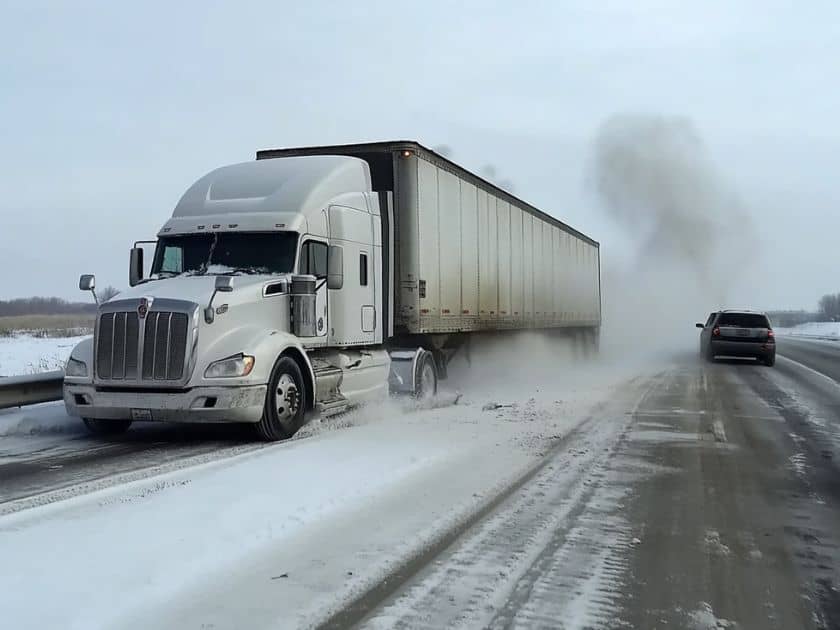
Types of Personal Injury Cases
Personal injury law covers many situations where someone gets hurt due to another’s actions. These cases range from traffic crashes to medical errors.
Motor Vehicle Accidents
Car accidents are common in Colorado. They often lead to injury claims. Crashes can involve cars, trucks, motorcycles, or pedestrians.
Victims may seek money for medical bills and lost wages. They might also get paid for pain and suffering. Colorado uses a fault-based system for car accidents. This means the person who caused the crash is responsible for damages.
Insurance usually covers these claims. But sometimes, victims need to go to court. A lawyer can help navigate the legal process.
Medical Malpractice
Medical malpractice happens when healthcare providers make mistakes. These errors can cause serious harm to patients.
Examples include:
- Wrong diagnosis
- Surgical errors
- Medication mistakes
- Birth injuries
Victims must prove the doctor didn’t meet the standard of care. This means showing what a skilled doctor would have done differently.
Medical malpractice cases are complex. They often need expert witnesses. These cases can take a long time to resolve.
Workplace and Slip and Fall Accidents
Workplace accidents can lead to injury claims. Some jobs, like construction, have higher risks. But accidents can happen in any workplace.
Workers’ comp usually covers job injuries. But sometimes, workers can file personal injury claims too. This might happen if someone besides the employer caused the injury.
Slip and fall accidents are another common type. These can occur in stores, restaurants, or other public places. Property owners must keep their spaces safe for visitors.
Victims need to show the owner knew about the danger. They also must prove the owner didn’t fix the problem in time.
Defective Products and Wrongful Death
Defective products can cause serious injuries. This includes things like:
- Faulty car parts
- Dangerous toys
- Unsafe medications
Victims can sue manufacturers, sellers, or distributors. They need to show the product was defective and caused their injury.
Wrongful death claims happen when someone dies due to another’s actions. Family members can file these claims. They might seek money for lost income, funeral costs, and emotional suffering.
These cases often involve serious accidents or medical errors. They can be very complex and emotional for families.
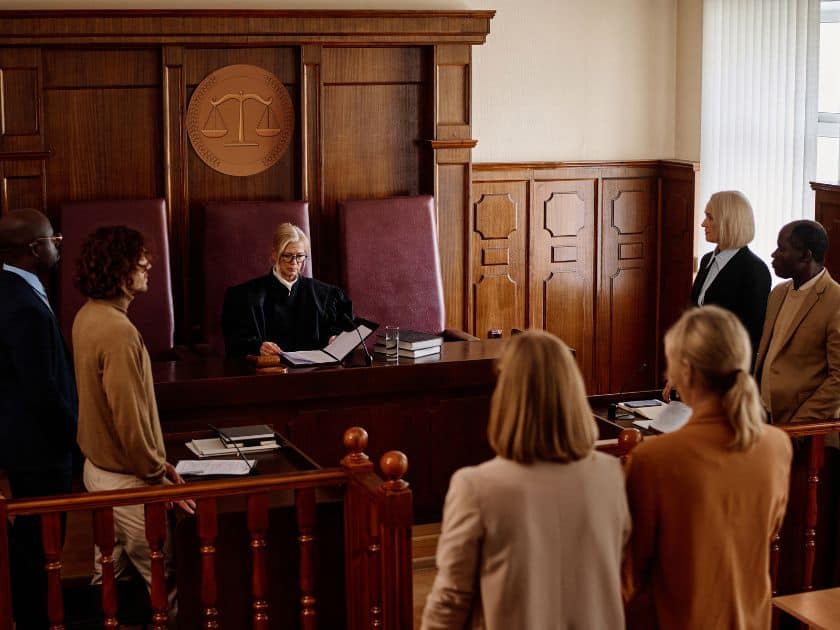
After the Verdict or Settlement
When a personal injury case in Colorado ends, the next steps involve getting paid and handling any legal challenges. The process can take time and may involve some back-and-forth between parties.
Receiving Compensation
After a settlement or judgment, the injured party can expect to receive compensation. The amount depends on factors like medical costs, lost wages, and pain and suffering.
The payment process varies:
- Settlements: The at-fault party’s insurance company usually sends a check within 30 days.
- Court verdicts: Payment may take longer, especially if there’s an appeal.
Before getting paid, the injured person must sign a release form. This form stops them from seeking more money for the same injury.
Medical liens and lawyer fees come out of the compensation first. The remaining amount goes to the injured person.
Post-Trial Motions and Appeals
After a trial, the losing side might file motions or appeals. These can delay payment and extend the legal process.
Common post-trial actions include:
- Motion for a new trial
- Motion to alter or amend the judgment
- Appeal to a higher court
Appeals can take months or even years to resolve. During this time, the judgment might not be paid.
If the defendant appeals, they may need to post a bond. This bond ensures payment if they lose the appeal.
The injured person’s lawyer will handle these legal steps. They’ll work to protect the verdict and get compensation as quickly as possible.


